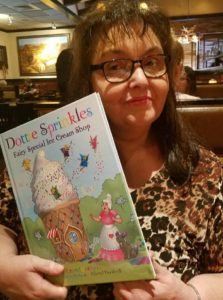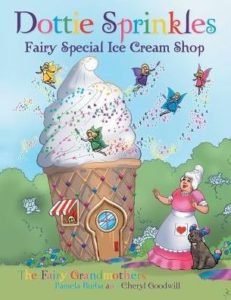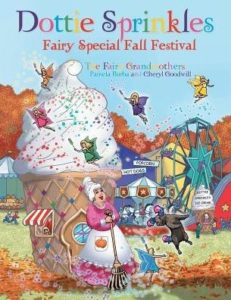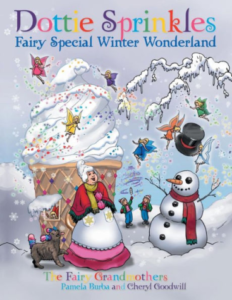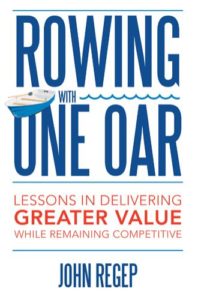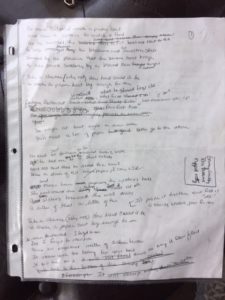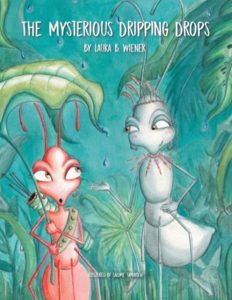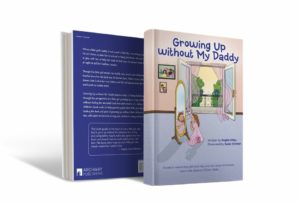The following are the words of Kris Embrey, author of “Tell Me You Want Me” and “Till The Other Side of Time”. For more information on Kris or her book, find her on her website or her Facebook page. Download the Archway Publishing free publishing guide for more information on our supported self-publishing services.
Imagine yourself completing your very first romance fiction novel and secure a publisher. Sounds good so far. But let’s say there’s a possibility you will meet the antagonist from your fiction story in real life. Would you change the antagonist storyline?
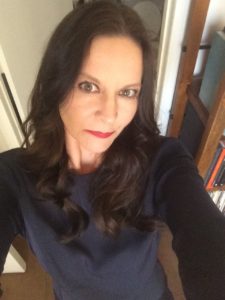 Hollywood has done countless movies on the subject of manifestation. The Matrix is one example, but could you see yourself living within a real-life matrix? It happened just after my first book was released in March 2016 by Archway Publishing. Life as a writer took an interesting turn when fictional characters started to show up on my path.
Hollywood has done countless movies on the subject of manifestation. The Matrix is one example, but could you see yourself living within a real-life matrix? It happened just after my first book was released in March 2016 by Archway Publishing. Life as a writer took an interesting turn when fictional characters started to show up on my path.
What I’d believed and thought about the spiritual world, would be challenged the day I’d met Mark Grant, and hearing the name Lex Lenord being paged over a P.A. system. Knowing this was more than a mere coincidence, as these were two fictional names used in my romance novel.
One afternoon, and the same week my first book was published, I was reviewing a profile from a dating site I’d joined. The man who I’ll call “Ray,” messaged me while I’d looked up at the sky, being memorized by a rainbow on a clear day. Replying back to Ray’s message, he seemed interested in meeting for coffee, making a plan to meet later in the week.
That following Monday, sitting at work, Ray sent a message to see if we could meet up for a drink after work. On that same day, I’d gotten my e-book stubs in the mail from Archway, and my first book was now officially published. Putting a few in my purse, heading out the door, I set out to go meet Ray.
At the bar, we ordered drinks and proceeded to have a great conversation. Talking with him, it felt like I’d known him a really long time, which was kind of unusual for me to hit it off with someone that fast. We paused and started looking into each other’s eyes and it got intense, “I really like you,” he said, with a smile, wanting to know what I was thinking. Being to shy to answer back, only offering him a smile in his direction, he smiled back. What I really wanted to say was, “Where have you been my entire life?” but the words didn’t come out. Our conversation would continue to flow the entire evening, as he asked questions of me being a writer. Reaching into my handbag, I pulled out one of the book stubs I’d gotten earlier that day, handing one to him, stating that I never expected him to ever read my romance novel. We continued to talk for a few more hours, then decided to end the night when he walked me to my car.

A few days passed after our date, and the friend who suggested I join the dating site was in town for work. The hardbound version of my book had just delivered to my door. Pulling the books from the box, my friend had arrived at my house. I didn’t give my friend time to settle in, excitement took over my mouth telling him about Ray, babbling on how I met this great guy, thanking my friend for the suggestion to join the dating site. Grabbing my phone to show a photo that Ray and I, had taken at the bar. My friend was standing over my books sitting on the table, as he started to get a very odd facial expression while doing a double take of the books sitting on my table. My friend picked up my book said, “are you kidding me? Look at this,” taking my phone to enlarge the photo, laid it next to my book; astounding to find that we were looking at the same person. “You didn’t show Ray this did you?” My friend demanded, positioning that I did give Ray a book stub, but hadn’t noticed the similarity to the illustrated book cover. “You manifested this guy.” My friend said, laughing shaking his head at me, as he walked away into the other room. I do admit, it was shocking to see the similarity of the cover art illustrated by a former co-worker several months before I met Ray, the resemblance was a dead-ringer.
Over the course of the next year, I became friends with Ray. His personality traits were being slowly revealed to me, and I would come to learn that he and the antagonist Sebastian, were one in the same. In these months of developing a friendship with Ray, synchronicity would connect him to my fiction story published with Archway. Sebastian had a specific storyline that was to be completed in a three-part series. Now, what do I do?

Manifestation at the basic core principal “like attracts like” which in philosophy is used to sum up the idea that by focusing on thoughts, a person brings positive or negative experiences into their life. I’d spent around nineteen-hours a day, seven days a week, over the course of three-months writing my book. I guess the manifestation of my antagonist was an inevitability waiting to happen. To say I was attached to my writing would be an understatement. I’d spent more time developing Sebastian, than other characters in the book. Sebastian came to life from cover to cover literally, and confirmed to me, a classic case of manifestation.
Synchronicities are the simultaneous occurrence of events that appear significantly related but have no discernible causal connection. Many experiences perceived as coincidence are due not merely to chance, but instead potentially reflected by the manifestation of coincident events or circumstances. Manifesting is the intention to create something. Focusing with great detail on my antagonist Sebastian seems I’d brought into my life experience his doppelganger, Ray.
Can manifestation of a fiction story really happen? Yes, it can. Perhaps The Matrix is more than just the work of science fiction. When you’re in the “zone” focused and developing characters, what is written can come to pass. It happened to me. Perhaps the best advice I can give any new romance author…write your own love story of how you’d want to see it play out, especially if your single, you might just meet the love of your life.
Archway Publishing is always looking for content for its blog. If you’re an Archway Publishing author and would like to share a guest blog post, please visit our Blog Guidelines Page.

